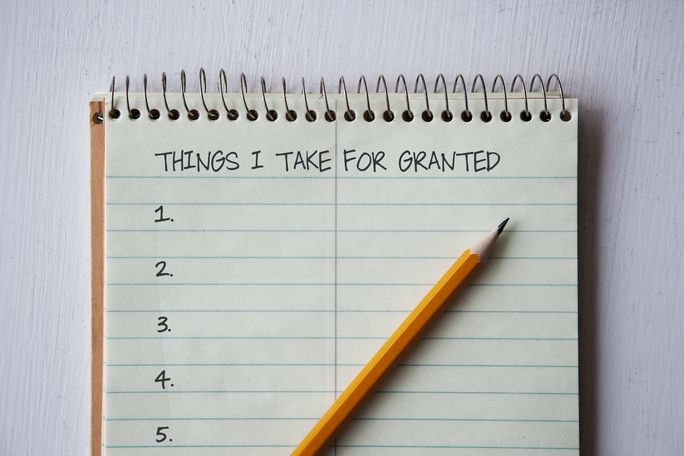A Thanksgiving Blog in June?
Thanksgiving Day for the U.S. is still months away, which means almost no one is thinking about turkeys or pilgrims. But is thankfulness still on our radar?

- Wait until a few days before Thanksgiving.
- Write about how being thankful is important all year long.
- Never write about thankfulness again until the same time next year.
At least, that’s how I usually handle it. It’s something of a tradition here in America to spend the time leading up to Thanksgiving talking about how important it is to be thankful every day of the year—and then almost immediately forget about it after the fourth Thursday in November.
So here we are. It’s June. Thanksgiving for the U.S. is a little under half a year away. Let’s throw tradition out the window and do what we don’t normally do this time of the year.
Let’s talk about thankfulness.
Intentionally thankful
The thing about thankfulness is that it’s much like a muscle. Sure, you might use it reflexively or instinctively from time to time, but if you really want to strengthen it, it’s going to take exercise.
A long-distance runner doesn’t increase his stamina just by deciding to have more stamina. He trains. He has a plan. He pushes his body through a difficult training regimen with the goal of building his endurance.
Thankfulness isn’t all that different. We don’t get better at thankfulness by just deciding to be better at it. We have to train too. We have to have a plan. We have to push ourselves to be thankful in situations where it doesn’t come naturally.
An exercise routine on thankfulness
Here’s a simple exercise to get you started:
Grab a piece of paper and list five things you’re thankful for.
No, seriously—try it. Complaining is easy, and it’s what a lot of us default to. Listing—physically writing down—the things we’re grateful for forces us to shift our focus to the positives instead of the negatives.
It’s more important than ever that Christians practice being thankful year-round—even during the difficult times when it doesn’t feel like we have much to be thankful for.
Got your five? Great. Now list five things you take for granted.
That’s a little more difficult, isn’t it? It means taking a minute to figure out what blessings in our lives we might be overlooking or underappreciating. Some of those underappreciated blessings might even be sitting there on your first list—or maybe you’ll have to dig a little deeper to uncover them.
Once you have that list finished, it’s time for the most difficult part of this exercise: Write down one way you can do a better job of expressing your thankfulness for each of those blessings.
(“Be more thankful” isn’t specific enough—really brainstorm a tangible action step, something you can actually do. If one of your blessings is your spouse, maybe that step is, “Buy her flowers this week,” or, “Spend some quality time with him.” If one of those blessings is a physical possession or an accomplishment, maybe that step involves expressing gratitude to someone who made it possible or taking a moment to thank God for it.)
Using your thankfulness lists
What we’re trying to do here is stretch our thankfulness muscles. By setting aside time to acknowledge our blessings, we train ourselves to be more thankful more often—maybe even during the moments when gratitude is the last thing on our mind.
How you use that exercise is up to you. Maybe you’ll start off each day by listing the things you’re thankful for, and only do the other lists once every week. Or maybe you’ll end each day by taking note of the things you took for granted, then coming up with a game plan for how to do better tomorrow.
Or maybe you’ll add in your own ideas for lists—maybe a list of trials you’ve come to be thankful for because of what they taught you, or a list of the ways you can be a blessing in the lives of others. Or maybe five is the wrong number for your lists—maybe you’d rather have three items or 10 items for each one.
Or maybe you think lists are ridiculous, and you have a better thankfulness regimen in mind. That’s okay too. You have to find what works for you. The important thing is that we’re doing something—making an effort to increase in thankfulness.
Practice Thanksgiving all year
One of the prevalent attitudes during “the last days” will be unthankfulness (2 Timothy 3:2). People will be less and less inclined to express gratitude for or even acknowledge their blessings.
By contrast, Christians are encouraged to be “giving thanks always for all things to God the Father in the name of our Lord Jesus Christ” (Ephesians 5:20). One of the Psalms tells us to “enter into His gates with thanksgiving, and into His courts with praise. Be thankful to Him, and bless His name” (Psalm 100:4).
That kind of thankfulness doesn’t happen by accident, and it won’t happen just because we’ve made the decision to “be more thankful.” It’s the kind of change that requires an attack plan, and making those lists is one way to tackle it.
As the attitudes of the last days become more and more prevalent, it’s more important than ever that Christians practice being thankful year-round—even during the difficult times and even when it doesn’t feel like we have much to be thankful for. The more we work at exercising our ability to express gratitude, the easier it will be for us to spot God’s goodness in our lives—and the less likely we’ll be to relegate thanksgiving to a once-a-year activity.
For further reading on this topic, read “Should Every Day Be A Day of Thanksgiving?”
Date Posted: June 30, 2021

 by Jeremy Lallier
by Jeremy Lallier

